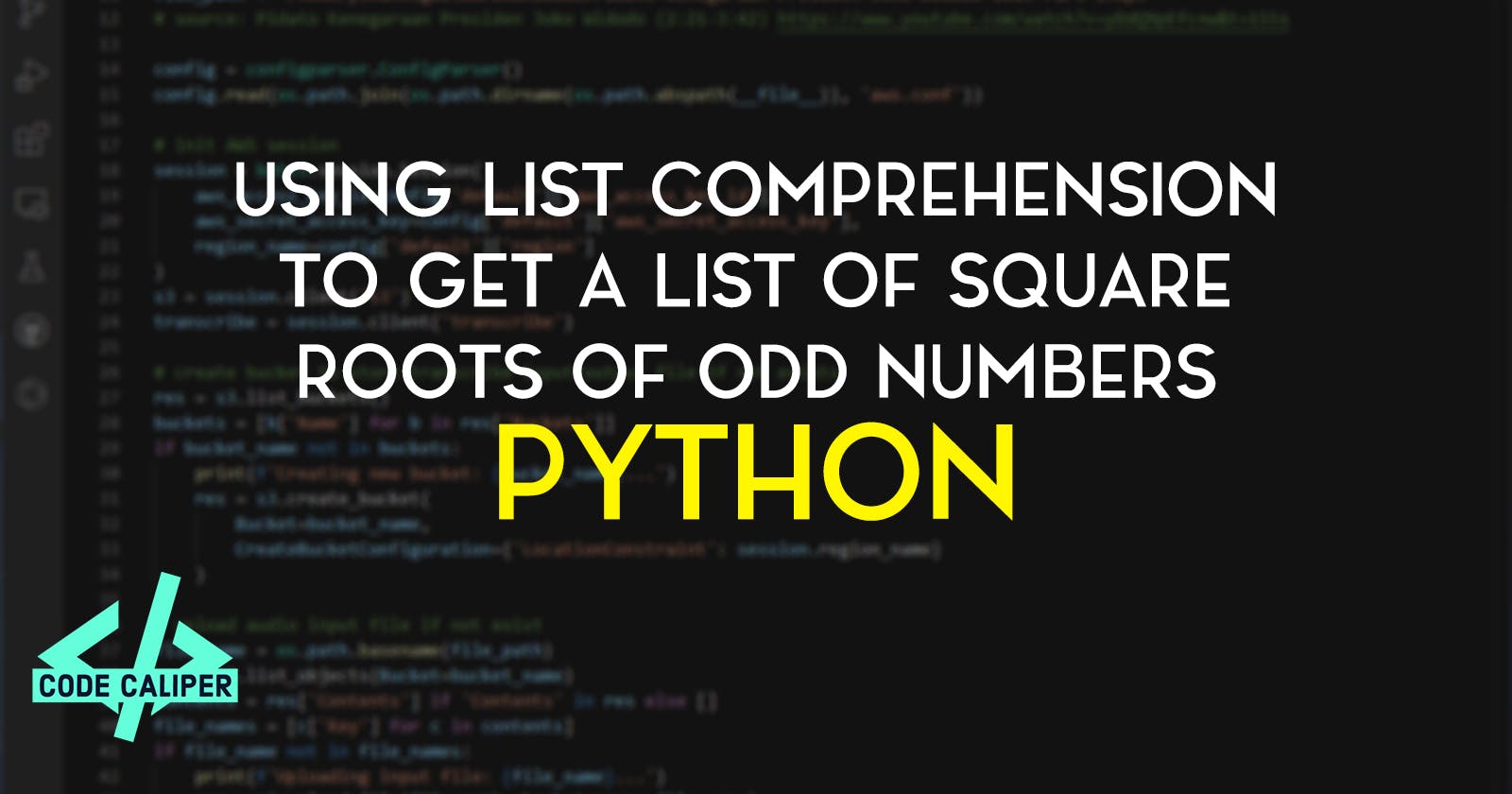Using List Comprehension to Get a List of Square Roots of Odd Numbers in Python
Table of contents
No headings in the article.
List comprehension is a concise way to create a list using a single line of code. It consists of brackets containing an expression followed by a for clause, then zero or more for or if clauses. The result is a new list that is the result of evaluating the expression in the context of the for and if clauses.
In this tutorial, we'll be using list comprehension to create a list of the square root of all odd numbers between 1 and 20. Here's the code for that:
odd_numbers = [i for i in range(1,21) if i % 2 != 0]
square_roots = [number ** 0.5 for number in odd_numbers]
print(square_roots)
This code creates a list called odd_numbers that contains all of the odd numbers between 1 and 20. It then creates a new list called square_roots using list comprehension, where the square root of each number in odd_numbers is calculated and added to the list. Finally, the list of square roots is printed to the console.
Alternatively, you can use the math module in Python to find the square root of a number. Here's the code for that:
import math
odd_numbers = [i for i in range(1,21) if i % 2 != 0]
square_roots = [math.sqrt(number) for number in odd_numbers]
print(square_roots)
This code works in the same way as the previous example, but instead of using the exponentiation operator (**) to calculate the square root, it uses the sqrt() function from the math module.
And that's it! With just a few lines of code, you can use list comprehension to create a list of the square root of all odd numbers between 1 and 20 in Python.

